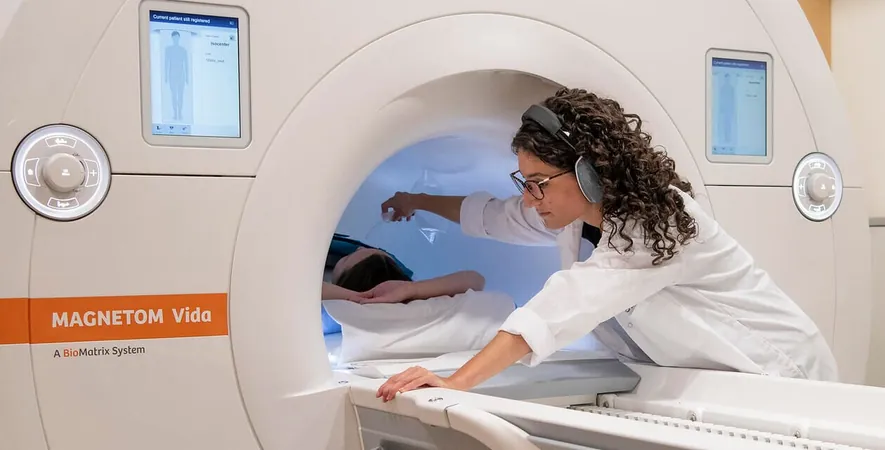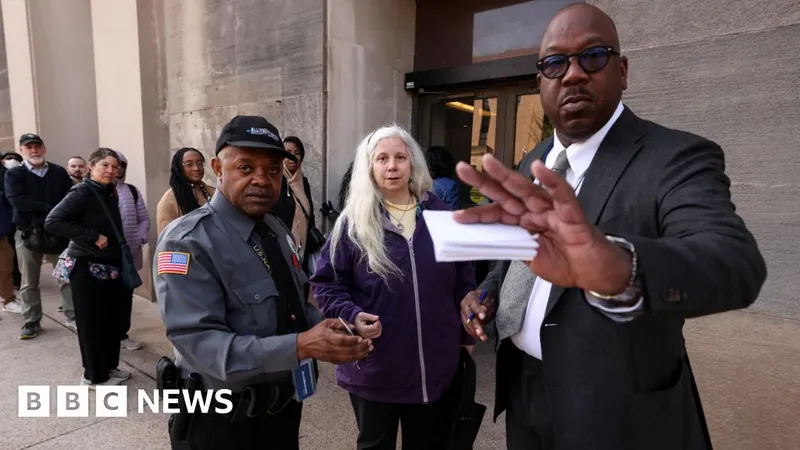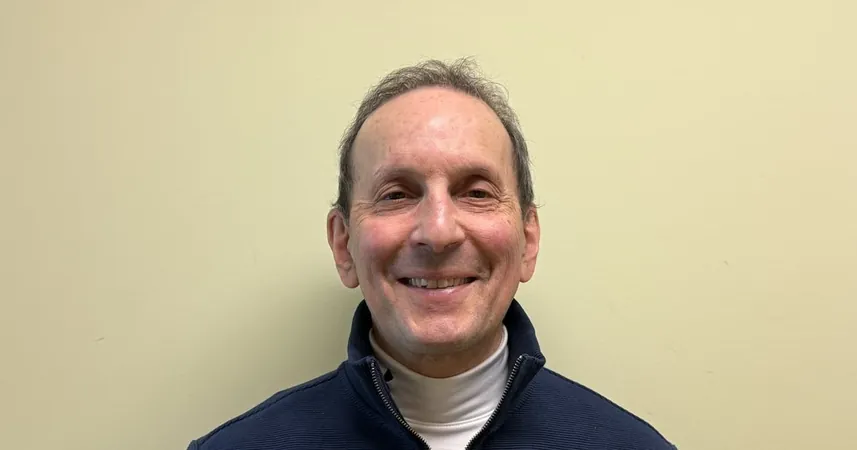
Groundbreaking Study Reveals Inflammation as Key Contributor to Lung Long COVID at St. Paul’s Hospital
2025-04-01
Author: Sophie
A Groundbreaking Discovery
A pioneering research effort from the Centre for Heart Lung Innovation (HLI) at St. Paul’s Hospital has unveiled a crucial discovery regarding pulmonary long COVID: inflammation in the smallest airways of the lungs is at the heart of persistent respiratory symptoms experienced by many long COVID patients.
The study, led by Dr. Don Sin, Director of HLI, employed cutting-edge xenon MRI technology alongside single-cell sequencing of lung samples. This work, supported by HLI's biobanking team, has resulted in significant findings published in three articles in the prestigious European Respiratory Journal.
Understanding Long COVID: A Lingering Threat
Years after the COVID-19 pandemic began, a significant number of survivors still struggle with lingering symptoms, categorized as long COVID. Affecting an estimated 10% of individuals who contract COVID-19, long COVID represents a multi-faceted disorder that varies widely, including symptoms such as brain fog, chronic fatigue, joint pain, breathlessness, wheezing, and persistent cough. The persistent effects can severely undermine patients’ quality of life, leading to increased healthcare costs and a broad swath of societal impacts.
The researchers at HLI directed their focus on pulmonary long COVID, which constitutes about one-third of long COVID cases characterized by extended lung issues.
Revolutionary Lung Imaging: The Xenon MRI Advantage
Even though many long COVID patients suffer debilitating symptoms, standard diagnostic tests such as lung function tests and CT scans often yield normal results for 80-90% of those tested. According to Dr. Sin, this discrepancy led researchers to explore more sensitive imaging technologies. This prompted the use of hyperpolarized xenon MRI, an advanced imaging technique that enhances visibility of lung function through three-dimensional imaging.
Far beyond traditional imaging, hyperpolarized xenon gas MRI allows for detailed visualization of the gas exchange process in the lungs, revealing problem areas that standard tests cannot detect. This innovative approach ultimately helped identify unique clusters of gas exchange abnormalities among long COVID patients, emphasizing the role of small airway inflammation in the manifestation of symptoms.
Unearthing the Cellular Culprits: Inflammation Revealed
To delve deeper into cellular mechanisms, a selected group of participants underwent bronchoscopies, which enabled researchers to collect tissue samples from their small airways for analysis via single-cell RNA sequencing. This high-resolution technique, however, posed logistical challenges requiring expert handling to ensure the viability of the samples during transport.
Once analyzed, the sequencing revealed ongoing neutrophilic inflammation in the small airways of pulmonary long COVID patients. Neutrophils—immune cells that typically combat infections—were found to persist even after the initial viral threat had subsided, contributing to continued respiratory symptoms.
Dr. Sin elaborated, “These immune cells are like dirty bombs. They’re sent to eliminate pathogens, but in patients with long COVID, their presence doesn’t diminish, leading to further airway damage.”
A Silver Lining: Hope for Recovery
Several questions remain unanswered, such as why certain individuals develop long COVID while others recover fully. There is also curiosity if such inflammation can be induced by other viruses, including influenza or RSV. However, Dr. Sin expressed cautious optimism, believing that the relatively mild inflammation could resolve naturally over time, contingent upon avoiding aggravating factors like smoking or exposure to air pollution.
In a hopeful conclusion, Dr. Sin emphasized the importance of maintaining a healthy environment. “Staying away from smoke, breathing clean air, and avoiding dusty conditions are critical preventative strategies. If patients adhere to these measures, we believe the inflammation linked to long COVID will likely subside.”
As the world continues to grapple with the aftermath of the pandemic, these findings provide a glimmer of hope for many who are battling the lingering effects of COVID-19, paving the way for a deeper understanding of long COVID and improving patients’ health and well-being.









 Brasil (PT)
Brasil (PT)
 Canada (EN)
Canada (EN)
 Chile (ES)
Chile (ES)
 Česko (CS)
Česko (CS)
 대한민국 (KO)
대한민국 (KO)
 España (ES)
España (ES)
 France (FR)
France (FR)
 Hong Kong (EN)
Hong Kong (EN)
 Italia (IT)
Italia (IT)
 日本 (JA)
日本 (JA)
 Magyarország (HU)
Magyarország (HU)
 Norge (NO)
Norge (NO)
 Polska (PL)
Polska (PL)
 Schweiz (DE)
Schweiz (DE)
 Singapore (EN)
Singapore (EN)
 Sverige (SV)
Sverige (SV)
 Suomi (FI)
Suomi (FI)
 Türkiye (TR)
Türkiye (TR)
 الإمارات العربية المتحدة (AR)
الإمارات العربية المتحدة (AR)